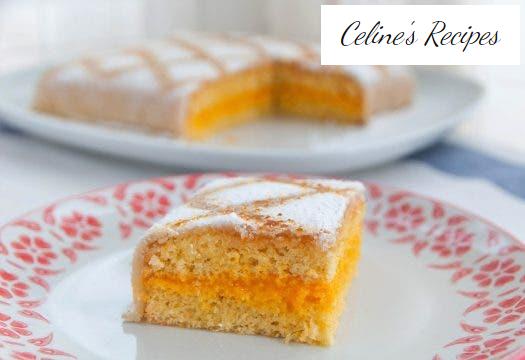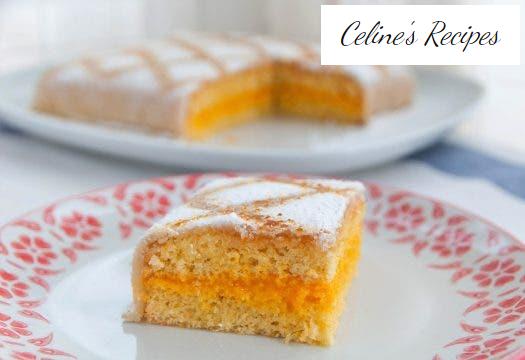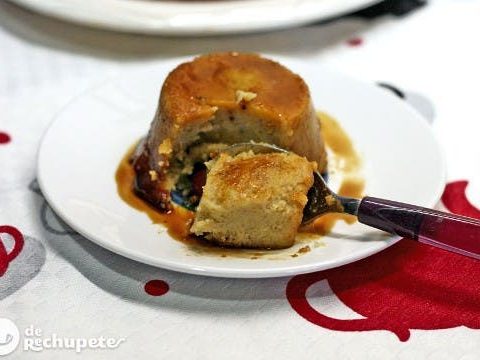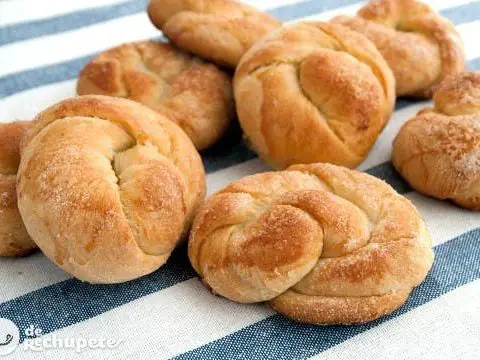
Info.
- 180 minutes
- For 6 people
- 1.8 € / person
- 320kcal per 100g.
How to make Segovian punch . I present you one of the sweet recipes with more fame and tradition in its city of origin, Segovia . A sweet snack that is the perfect culmination to a delicious suckling pig or roast lamb at the festivities of San Juan.
Although it is a secret recipe and under patent, we can say that its base is yolk, sponge cake and almonds , which combined make this sweet a culinary wonder.
It is a highly appreciated sweet that, although today we can find in all the patisseries in the city, the Segovian Ponche brand , by judicial decree, is only manufactured by the descendants of its inventor, owners of the Alcázar confectionery in Segovia, where it continues to be prepared by hand.
How from time to time I like challenges and this particular dessert made me fall in love from the first moment I tried it. Today I bring you a recipe for Segovian punch that although it is not that of the Alcázar confectionery, I assure you that it is dead.
At the San Juan and San Pedro de Segovia festivities, this bakery prepares Segovian punch rivaling hard with the roscones de Reyes at Christmas, they are sold to hundreds.
It is a delicate, moist and fluffy cake, where sugar is essential to achieve a perfect flavor and texture. It is true that it is based on several elaborations, a Genoese sponge cake, a yolk cream, a homemade marzipan and a syrup, which requires some work.
We can always do the elaborations in time, in a couple of days and thus make the work more bearable. I encourage you to get down to work to prepare this sweet, I assure you it is worth it.
Preparation of the Genoese sponge cake base
- We separate the whites from the yolks of the eggs and reserve the yolks. It is advisable that we have the eggs at room temperature, so they will lift before, both the yolks and the whites.
- We mount the egg whites until stiff with a pinch of salt. We reserve.
- In a bowl we beat the yolks with the sugar until we get a foamy mixture and its volume has increased considerably.
- We incorporate the mounted whites and, with enveloping movements, we integrate them with the yolks. It is important that we do not beat the mixture, it is about integrating the whites and that the result is aired.
- We sift the flour and, with a shovel, integrate it with the rest with smooth movements and keeping the air inside the dough.
Baking the Genoese cake
- While the oven is preheated to 170ºC, we spread a 22 x 28 cm rectangular mold. We line it with baking paper to facilitate the unmolding of the cake. We pour the dough into the mold and take it to the oven.
- We cook the cake for about 20 minutes, with heat above and below and without a fan. Before removing the cake we prick it with the tip of a knife to check that it comes out clean.
- I have used this mold because my idea is to cut the cake, once baked and cold, in half, as a sandwich. We could make a larger and thinner sheet to save us the trouble of dividing the cake. Thus we would reduce the baking to 10 minutes.
- Let the cake cool on a rack in the same mold for about 15 minutes before removing it from the mold. We will wait for it to cool completely on the rack before using it. We can also prepare the cake the day before the preparation of the sweet, it will be kept perfectly wrapped in transparent paper.
Preparation of marzipan for filling
- To prepare the marzipan we can use almond already ground or grind it ourselves at home. If what we have are almonds mats and with skin, the process is simple.
- We blanch the almonds for a few seconds in boiling water. Once drained, we can remove the skin very easily.
- We dry the almonds with a cloth and crush them with a kitchen robot. To avoid that we get caked by the oil that will release when crushed, we add a teaspoon of sugar before grinding. This will leave the almonds loose and dry.
- With the sugar we do the same process, we grind it to avoid the grains in the marzipan, so it will be finer.
- We can also use icing sugar, but we must bear in mind that icing sugar has starch, which will slightly vary the proportion of liquid to add.
- In a bowl we combine the ground sugar with the ground almond. Mix well with a fork and add half of the egg white. We leave the other half to add depending on what we see you need.
- We begin to integrate the white with the rest of the ingredients with the help of a fork and finally with our hands until we form a compact ball.
- If necessary, we continue adding the remaining white to achieve the consistency of a manageable and slightly sticky dough. We reserve the marzipan.
Preparation of the yolks and the syrup
- In a small saucepan add the water and sugar.
- We make a syrup by cooking the mixture over medium heat for about 15 minutes. This hard consistency is necessary for the preparation of the yolk.
- On the other hand we beat the yolks in a bowl. We must have the yolks at room temperature. We incorporate the syrup little by little, and without stopping stirring, until it is integrated with the beaten yolks.
- Return the mixture to the saucepan and at medium temperature, without stirring, cook the yolk until we see that it begins to thicken.
- We remove from the fire and reserve.
- We prepare a syrup by putting the water with the sugar and the piece of lemon peel in a saucepan. Let the syrup cook for 5 minutes and remove from the heat.
If you still do not have it clear, I leave you a step by step in photos of this Segovian punch recipe so that it comes out yes or yes, do not hesitate, follow these photos.
Final assembly of the cake. Final presentation of the Segovian Punch
- We cut the cake into two parts that will be the two floors of the Segovian punch. We place the first sponge cake plate in a bowl and soak it in syrup with the help of a kitchen brush.
- We put the yolk in a pastry bag or a plastic bag and distribute it over the entire surface of the cake. We cover with the second sponge cake plate and soak it again with the remaining syrup. We reserve in the fridge.
- We have to stretch the marzipan to put it on the cake. To do this, sprinkle a work surface with ground sugar or icing sugar and, with a rolling pin, begin to stretch the marzipan.
- We try to make it finite, like 3 or 4 millimeters. It is a very delicate dough that will surely tend to break. Don’t worry, we try to patch it with pieces of marzipan and stretch.
- We roll the marzipan sheet on the rolling pin and transfer it over the cake. We trim the remaining edges and slightly compact the layer so that the cake is well lined.
- We sprinkle the entire surface of the Segovian punch with ground sugar or icing sugar and with a long utensil we mark the decorative lines in rhombus that we need as a guide for the characteristic decoration of this dessert.
- With a kitchen torch we burn the sugar following the pre-marked lines leaving the image of a grid.
Although it seems like a very laborious job, and it is true that this dessert has several preparations, it is a sweet that is worth preparing at home. You will be like kings with this sweet as delicate as sweet, a delicious delicacy.
Origin of this sweet
- It is a dessert originating from the beginning of the 20th century, specifically it was in the year 1926 when the confectioner Frutos García Martín, began to prepare and sell this preparation in his establishment located in the Plaza Mayor of Segovia.
- Such was the success of this cake that even King Alfonso XIII himself, a regular holidaymaker at the Farm, encouraged its inventor to present his wonderful culinary creation at the next Universal Exposition that would take place in Barcelona in 1929. From there he won with a gold medal, which made this very special sweet more popular.






